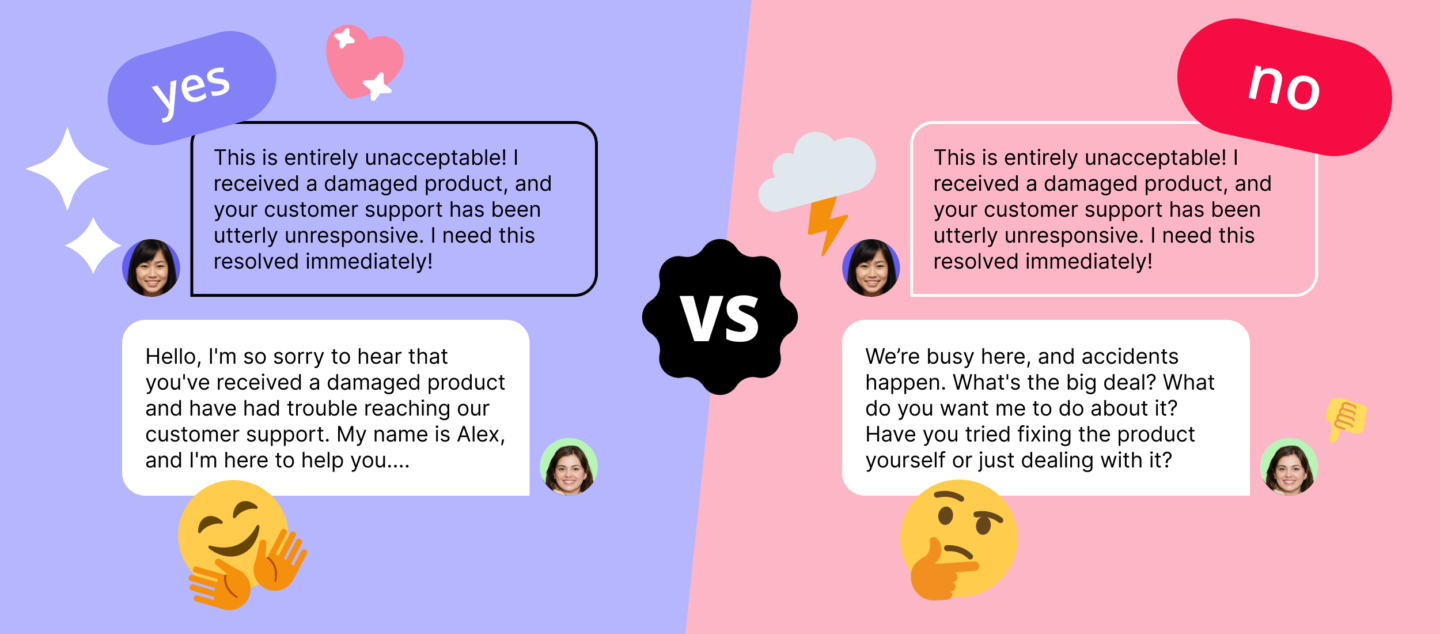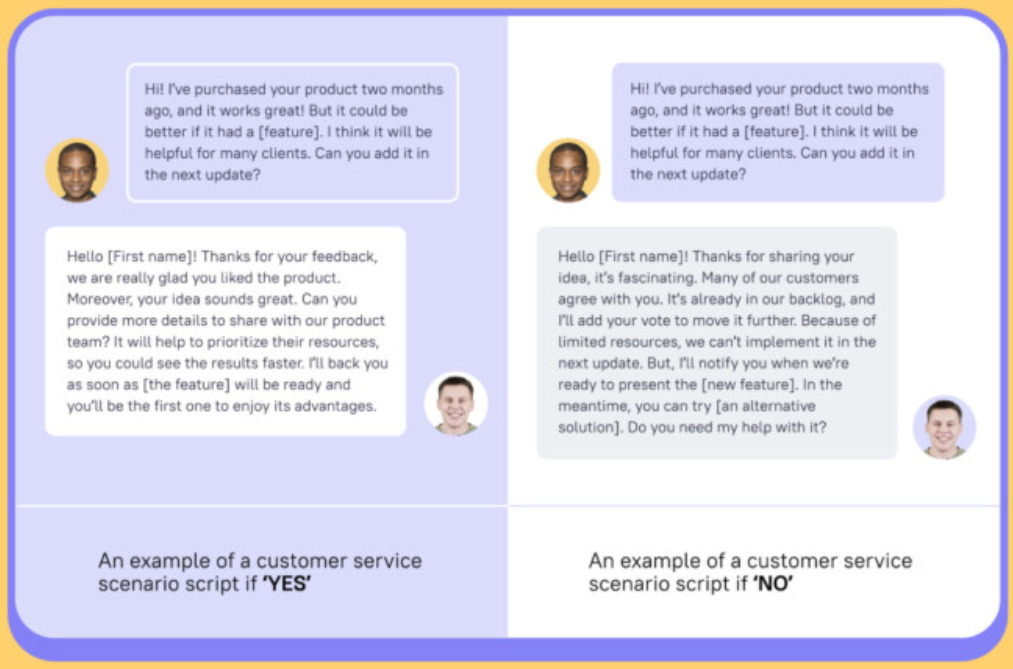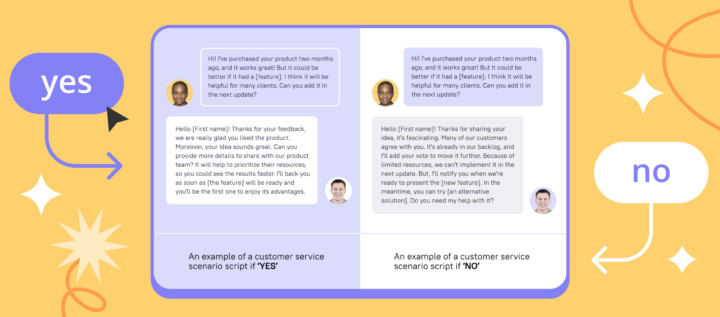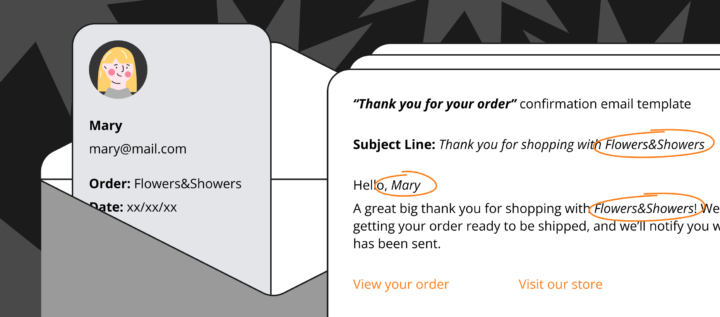Best tips and script templates to handle frustrated customer situations

Frustrated customers can arise for many reasons, ranging from unmet expectations and product or service failures to poor communication or unresponsive customer support. Dealing with frustrated customers involves effectively managing and resolving these issues when they do arise.
This article will explore best practices and scripts for addressing customer frustrations with empathy, active listening, and problem-solving.
By implementing these approaches, businesses can not only alleviate customer frustration but also turn these challenging situations into opportunities to build trust, enhance customer satisfaction, and ultimately foster long-lasting relationships with their clientele.
Why you can’t ignore frustrated customers
By effectively addressing and resolving their concerns, companies can turn these negative situations into opportunities for growth and improvement.
Some of the main benefits of working with frustrated customers include the following:
- By demonstrating your commitment to their satisfaction, customers are likelier to continue doing business with your company and recommend it to others.
- Frustrated customer feedback can help identify issues that may have been overlooked and drive enhancements to the overall customer experience.
- When you effectively address a frustrated customer’s concerns, they may share their positive experience with others. This can generate positive word-of-mouth, which is an essential marketing tool and can help improve your company’s reputation.
- By proactively working with frustrated customers, your business can stand out from competitors that may not prioritize customer satisfaction. This provides a competitive edge in the marketplace and can attract new customers.
- By investing time and effort in addressing frustrated customers’ issues, you increase the likelihood of turning them into repeat customers. This can lead to higher customer lifetime value, which translates to increased long-term revenue for your business.
- Handling frustrated customers develops critical problem-solving and communication skills that can benefit your organization in the long run.
- When you work with frustrated customers and resolve their concerns, you build trust and credibility with your customer base.
So how would you address this customer request 👇
Customer: This is entirely unacceptable! I received a damaged product, and your customer support has been utterly unresponsive. I need this resolved immediately!
Bad customer service response
CSR: We’re busy here, and accidents happen. What’s the big deal? What do you want me to do about it?
Customer: My name is Jane Doe, my email is janedoe@example.com, and my order number is 12345. I’ve been trying to get a resolution for days, and I’m incredibly frustrated with this whole experience.
CSR: It’s not like we did it on purpose, Jane. We can’t control everything. Have you tried fixing the product yourself or just dealing with it?
Customer: I just want a replacement product or a refund if that’s impossible. I can’t believe how difficult this process has been so far.
CSR: Look, we have a lot of customers to deal with, so you’ll just have to wait your turn. Maybe we’ll get around to it eventually.
This is a bad example of handling a frustrated customer request for several reasons:
- The CSR does not acknowledge the customer’s frustration or apologize for the inconvenience they’ve experienced, making the customer feel undervalued and dismissed.
- Instead of taking responsibility for the issue and looking into it, the CSR downplays the problem and suggests that the customer should fix it themselves or “deal with it.”
- The response is dismissive and unhelpful, providing no real solutions or support for the customer’s issue. This approach can lead to increased frustration and dissatisfaction.
- The CSR does not offer to investigate the problem or assist the customer, making them feel unsupported and ignored.
By responding in this manner, the customer service representative will likely exacerbate the customer’s dissatisfaction, potentially leading to negative reviews, loss of business, and damage to the company’s reputation.
Good customer service response
CSR: Hello, I’m so sorry to hear that you’ve received a damaged product and have had trouble reaching our customer support. My name is Alex, and I’m here to help you. Please provide me with your name, email address, and order number, so I can look into the issue for you.
Customer: My name is Jane Doe, my email is janedoe@example.com, and my order number is 12345. I’ve been trying to get a resolution for days now, and I’m extremely frustrated with this whole experience.
CSR: Thank you for providing the information, Jane. I apologize for the inconvenience you’ve experienced, and I understand how frustrating this must be. Please allow me a moment to look into your order and find a solution to address your concerns.
Customer: I hope you can actually help me. I just want a replacement product or a refund if that’s not possible. I can’t believe how difficult this process has been so far.
CSR: I completely understand your concern, Jane. I’ve looked into your order and confirmed the damaged product issue. I can arrange for a replacement to be sent to you immediately, or, if you prefer, we can process a refund. Please let me know which option you’d prefer, and I’ll take care of it right away.
Customer: I’d prefer a replacement, as long as it arrives in good condition this time.
CSR: Absolutely, Jane. I’ve initiated the process to send you a replacement product. I’ll make sure it’s properly packaged and inspected before shipping to prevent any further issues. You’ll receive an email shortly with the updated tracking information. Please accept my apologies for the inconvenience, and if you have any further concerns or questions, feel free to reach out.
Customer: Thank you, Alex. I appreciate your assistance in resolving this issue. I’ll be waiting for the updated tracking information and the delivery of the replacement product.
Here is why it is a good example of handling a frustrated customer request:
- Manager acknowledges the customer’s frustration and apologizes for the inconvenience, making the customer feel heard and understood.
- Customer is promptly asked for relevant information to look into the issue, demonstrating their willingness to help and resolve the problem.
- Manager keeps the customer informed about the issue, explaining the cause of the problem, and outlining the steps they are taking to address it.
- The response includes a solution — a replacement or refund, which shows a company’s commitment to resolving the issue and meeting the customer’s needs.
- The CSR assures the customer that they are available for any further concerns or questions, giving the customer confidence that their needs will be met.
By responding in this manner, the customer service representative effectively addresses the customer’s concerns, alleviates their frustration, and fosters a positive experience that can lead to improved customer satisfaction and loyalty.
Best practices of dealing with frustrated customers
Dealing with frustrated customers can be challenging, but it’s crucial to maintain professionalism and empathy while striving to resolve their issues effectively.
Here are some detailed tips to help you navigate these situations:
- Allow the customer to express their concerns without interrupting them. Pay attention to their words and tone, and refrain from making assumptions. Use phrases like:
- “I understand how you feel.”
- “Please tell me more about the issue you’re experiencing.”
- “It sounds like you’re really frustrated because…”
- Acknowledge the customer’s feelings and express understanding of their frustration. Validate their emotions and demonstrate that you care about their concerns. Use phrases like:
- “I can see why you’re upset.”
- “I apologize for any inconvenience this has caused.”
- “Thank you for bringing this to our attention.”
- Own up to any mistakes or shortcomings on your company’s part and offer a genuine apology. This helps build trust and shows the customer that you’re committed to making things right. Use phrases like:
- “I’m sorry that you’ve had this experience.”
- “We take full responsibility for this issue.”
- “We understand that we’ve let you down, and we want to make it right.”
- After understanding the issue, provide a solution that addresses the customer’s concerns. If you’re unable to resolve the issue immediately, offer alternatives or explain the steps you’ll take to find a solution. Use phrases like:
- “Here’s what we can do to resolve this issue for you…”
- “I’ll investigate this further and get back to you with more information.”
- “We’re unable to do X, but we can offer Y as an alternative solution.”
- Update the customer on any progress or developments regarding their issue. This demonstrates that you’re actively working to resolve their concerns and helps build trust. Use phrases like:
- “I wanted to update you on the status of your issue…”
- “I’ve contacted the relevant department, and they’re working on a solution.”
- “We expect to have this resolved by [specific time frame].”
- Even if the customer is upset or aggressive, remain calm, composed, and respectful throughout the conversation. This can help diffuse tension and prevent the situation from escalating. Use phrases like:
- “I understand your frustration, and I’m here to help.”
- “We appreciate your patience while we work to resolve this issue.”
- “Thank you for giving us the opportunity to address your concerns.”
- Once the issue has been resolved, follow up with the customer to ensure they’re satisfied with the outcome. This reinforces your commitment to their satisfaction and helps build a positive relationship. Use phrases like:
- “I wanted to check in and make sure everything was resolved to your satisfaction.”
- “Please don’t hesitate to reach out if you have any further concerns.”
- “We appreciate your business and hope to continue serving you in the future.”
By employing these tips and maintaining a focus on empathy, problem-solving, and clear communication, you can effectively handle frustrated customers and create a more positive customer experience.
Deal with complicated customer queries like a pro with our playbook of 15 tricky customer service scenarios and ready-made answers 👇
Thanks! Now check your inbox






